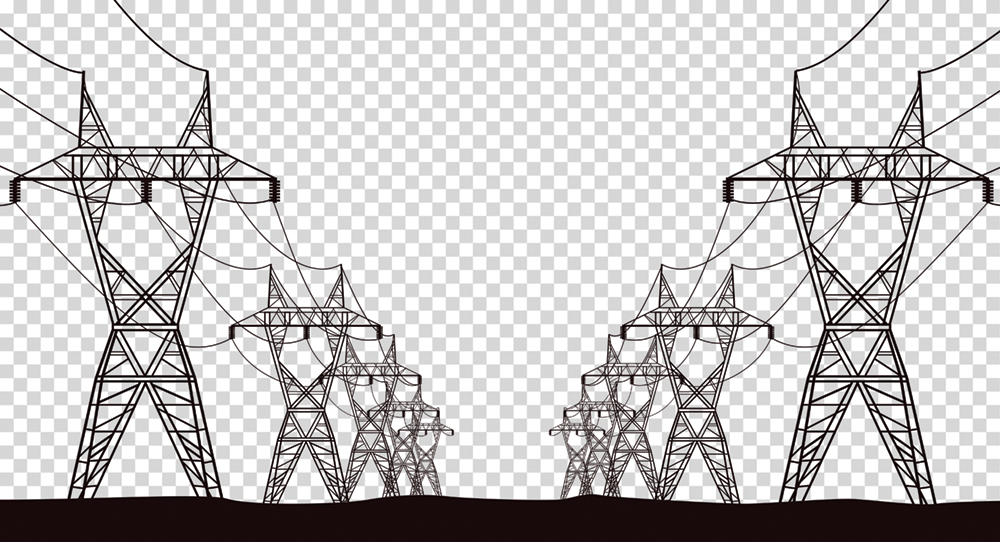
Nepal anticipates being a net exporter of clean and renewable source of energy or hydroelectricity by 2025 and there will be no need for imports even during the dry season, according to Kul Man Ghising, Managing Director of Nepal Electricity Authority, the country’s sole power off-taker.
The country has now reached self-reliance in electricity generation and is heading towards becoming an energy-surplus nation. According to the Independent Power Producers’ Association, Nepal (IPPAN), along with the recent addition of the 86 MW Solu Dudhkoshi Hydropower Project to the national grid, the installed capacity has reached 2,520 MW. The country has a target of 6,700 MW of installed capacity by 2027.
“The contribution of the private sector is expected to reach 80% of installed capacity from the present 55%. With sluggish peak demand at 1,700 MW, the current year’s wet season surplus is expected to reach 1,000 MW,” said Ashish Garg, Vice President of IPPAN, adding, “Nepal is ready to broaden its green energy market to the region as per its aspiration to be the ‘powerhouse’ of South Asia.”
A few other hydroelectric projects are under the study phase following the MoU with the Indian government-owned NHPC Ltd and SJVN Ltd. NHPC Ltd has obtained survey licence of 750 MW West Seti HEP and 450 MW Seti River-6 (SR-6) HEP in the Seti River basin of Far Western Nepal including a new deal of 480 MW Phukot Karnali Hydroelectricity Project signed between Vidhyut Utpadan Company Ltd (VUCL) and NHPC Ltd, a Government of India enterprise, during the recent India visit of Prime Minister Dahal.
In addition, VUCL had already sealed the deal with SJVN Ltd to form a joint venture to execute the 490 MW Arun-4 Hydroelectric Project. SJVN Ltd is the principal sponsor of the JVs for development of four mega projects as per the concept of basin optimisation including Lower Arun that has tandem operation with the Arun-3 HEP. The 900 MW Arun-3 HEP has already achieved 65% progress in civil works and 15% in transmission line. The developer of Arun-3 HEP has also been developing a 253-km-long – 217 km in Nepal side (from powerhouse of Arun-3, Pukhuwa-Dhalkebar-Bathnaha) and 36 km from Bahthnaha to Sitamarhi in India – 400 kV double-circuit quad-conductor transmission line.
Nepal will benefit from energy royalty, capacity royalty, free energy, income tax, export fees, environmental and forest fees and other benefits like implementation of the Local Development Plan (0.5% of the project cost must be mandatorily spent for the communities of affected areas), industrial and employment benefits (use of Nepali construction materials, skill transfer to the local employees), rural electrification and 30 units of free energy every month for affected families.
Many believe the dominating presence of Indian firms in the development of Nepal’s hydroelectricity is market driven as the ‘Guidelines for Import/Export (Cross-Border) of Electricity’ issued by the Ministry of Power, Government of India, prevents the purchase of electricity generated through the investment of nations which it does not have a bilateral agreement with on power sector cooperation. As a result, many Chinese firms expressing interest to develop hydroelectricity eyeing the clean energy market in South Asia gradually pulled away from some mega projects like West Seti HEP (previously CTGI had lodged interest) or left the projects in the doldrums like Tamor Storage HEP (Power China refused to form a joint venture with HIDCL as agreed in 2019 and has been given a month’s deadline to clear its stance by the 54th board meeting of the Investment Board Nepal chaired by the Prime Minister on May 28, 2023) for a long time as the Chinese firms remain indecisive about making investments without guarantee of power sale following the directives of the Ministry of Power of India. Apart from a few medium and small sized projects like Upper Marsyangdi-2, Manang Marsyangdi and Upper Marsyangdi-1, among others, most of the mega hydroelectric projects do not have the involvement of Chinese firms including the 1,200 MW Budhi Gandaki Hydroelectric Project. However, Indian firms are grabbing a plethora of projects in Nepal, reportedly to deepen power sector cooperation in consideration to expand the share of clean and renewable energy to minimise the carbon emission.
(Source: Ministry of Energy, Water Resources and Irrigation)
READ ALSO:
Gaining momentum
Cross-border electricity trade has been gaining momentum in recent years. The ‘India-Nepal Joint Vision Statement on Power Sector Cooperation’ issued in April 2022 during the visit of Nepal’s erstwhile Prime Minister Sher Bahadur Deuba is considered a breakthrough in power cooperation between the two nations, which has also paved the way for triggering Indian investment in Nepal’s hydroelectricity generation as well as G2G (government-to-government) deal for taking forward the high-capacity cross-border transmission lines. The landmark announcement by the southern neighbour during the recent visit of Prime Minister, Pushpa Kamal Dahal, to purchase 10,000 MW of hydroelectricity in the next 10 years could lure more investment. Additionally, India’s green signal to enable power trade between Nepal and Bangladesh using Indian grid has further stimulated power sector development. Bangladesh is keen to develop the 683 MW Sunkoshi-3 Hydroelectric Project and a few other power projects in Nepal if the trilateral deal between Nepal, India and Bangladesh regarding power trade is concluded. NEA Managing Director Ghising has said that India’s commitment to purchase electricity from Nepal shall enable the power utility to open short-term power purchase agreements (PPA) with developers. “Nepal can sell a large quantum of surplus power in the Indian market,” he added. Moreover, Nepal has already started exporting its excess power to the Indian market.Most FDI projects in hydroelectricity are from India. The Investment Board Nepal has signed project development agreements (PDA) of three mega hydel projects - Arun-3 HEP (900 MW), Upper Karnali HEP (900 MW) and Lower Arun HEP (669 MW). All three projects are export propositions.In 2022, Nepal earned around Rs 12 billion from electricity export to India by selling 452.6 MW of electricity, however, the country is still facing deficit in electricity trade as it is compelled to purchase electricity from India during the dry season due to a sharp decline in generation from the run-of-the-river (RoR) based hydroelectric projects.
Majority of FDI projects from India
Nepal’s hydropower sector has witnessed a significant chunk of FDI inflow after over a decade of two FDI projects in Nepal, 60 MW Khimti Hydropower of Norwegian company Statkraft Anlegg and the US-based Panda Energy’s investment in 45 MW Bhotekoshi Hydroelectric Project. FDI inflow in hydroelectricity has increased exponentially in recent years. Most FDI projects in hydroelectricity are from India. The Investment Board Nepal has signed project development agreements (PDA) of three mega hydel projects - Arun-3 HEP (900 MW), Upper Karnali HEP (900 MW) and Lower Arun HEP (669 MW). All three projects are export propositions. The hydroelectric projects include cross-border transmission lines and export of power for 25 years from the date of commissioning as per the public-private partnership (PPP) agreement with the government of Nepal, particularly to be developed under the Build, Own, Operate and Transfer (BOOT) modality.FDI in Clean Energy Projects
| S.N. | Project | Capacity | Developer (principal sponsor of JV) | FDI source country | Status |
| 1 | Upper Karnali Hydroelectric Project | 900 MW | GMR Energy | India | DPR approved/Time extension given to achieve FC |
| 2 | Arun 3 HEP | 900 MW | SJVN Ltd | India | 65% Civil & 15% progress towards transmission |
| 3 | Lower Arun HEP | 669 MW | SJVN Ltd | India | PDA signed / project licence to be issued within 2 years |
| 4 | Upper Trishuli 1 HEP | 216 MW | NWEDC | South Korea | Under construction |
| 5 | Upper Marsyangdi-2 HEP | 327 MW | SCIG Co Ltd (JV with BPC in Nepal) | China | DPR approved |
| 6 | West Seti HEP | 750 Mw | NHPC Ltd | India | Survey licence issued/DPR shall be submmitted in 24 months |
| 7 | SR-6 (Seti River 6) HEP | 450 MW | NHPC Ltd | India | Survey licence issued/DPR shall be submmitted in 24 months |
| 8 | Grid Connected Solar Project | 250 MW | Risen Energy | Singapore | Time extension for Detailed feasibility study |
| 9 | Upper Marsyangdi-1 HEP | 102 MW | CCK Power Holdings | China | Investment Approved |
| 10 | Dudhkoshi-2 Jaleshwor HEP | 70 MW | Power Investment Company | India | Investment Approved |
| 11 | Manang Marsyangdi HEP | 135 MW | SCIG Co Ltd, Chengdu Xingcheng Investment Group and Qing Yuan Engineering Consulting Company | China | PDA signed |
| 12 | Phukot Karnali HEP | 480 MW | NHPC Ltd | India | MoU signed |
| 13 | Arun-4 HEP | 490 MW | SJVN Ltd | India | MoU signed |
| 14 | Tamor Storage Hydrelectric Project | 756 MW | Power Constructuin Corporation of China & HIDCL Nepal (JV) | China | MoU signed |
Turning point for accelerating power trade with Bangladesh
The Investment Board Nepal signed the first PDA with GMR Energy Ltd, a private sector company, that has signed a memorandum of understanding with Bangladesh. Bangladesh had signed a MoU with India’s NTPC Vidyut Vyapar Nigam Ltd (NVVN) to import electricity from the Upper Karnali Project via India during Bangladesh Prime Minister Sheikh Hasina’s visit to New Delhi in April 2017. Bangladesh has also issued a letter of intent to GMR Group expressing its interest to enter into a contract to purchase 500 MW of electricity from Nepal-based Upper Karnali Project. GMR Energy Ltd has given a performance bond worth $5 million to the government of Bangladesh to sell the power of Upper Karnali Hydroelectric Project. “This in the true sense will be the opening up of Bangladesh energy market via India,” a highly placed source at the Ministry of Energy, Water Resources and Irrigation, said, adding, “This will be the litmus test of India’s position to foster regional power cooperation.” GMR Upper Karnali Ltd will first have to achieve financial closure immediately within the given extension as per the government’s decision.Robust cross-border transmission line to propel electricity trade
India has experience in energy trading with its neighbours - Nepal, Bhutan, Bangladesh and Myanmar - that could be instrumental in setting up new avenues for power trade through a regional energy grid. In the meantime, Nepal is developing a high-capacity cross-border electricity trade infrastructure apart from Dhalkebar-Muzaffarpur Cross-border Transmission Line completed in 2016 at the border points including robust transmission network inside the country. The government is planning to develop a few other cross-border transmission line projects including a robust transmission system within the country to evacuate power from different corridors. Butwal-Gorakhpur is going to be executed under the US government’s Millennium Challenge Corporation grant within five years, Inaruwa-Purniya by 2027/28 and Lamki-Bareli is another proposed cross-border transmission line for linking far western region, which is expected to be completed by 2028/29 with Indian grid allowing power evacuation from hydroelectric projects going to be developed in this region including West Seti and SR-6 Hydroelectric Projects. Implementation of these projects was agreed upon during the Nepal-India Joint Steering Committee (JSC) meeting on India-Nepal Cooperation in the Power Sector held in February this year. Nepal is currently conducting electricity trade with India via different international trunk lines ranging from Eastern to Far-Western Nepal, namely Kushaha-Kataiya 132 kV line, Dhalkebar-Muzzafarpur 400 kV line, Raxaual-Parwanipur 132 kV line, Gandak-Ramnagar 132 kV line and Mahendranagar-Tanakpur 132 kv line. Implementation of these cross-border transmission lines shall advance the cross-border electricity trade in the region in particular with India and Bangladesh and also serve as investment apparatus for Nepal’s hydroelectricity development. Major cross-border transmission lines between Nepal and India that can propel regional electricity trade| SN | High-capacity 400 kV Cross-border Transmission Line | Status |
| 1 | Dhalkebar-Muzaffarpur Cross-Border Transmission Line | Completed & under operationalisation |
| 2 | New Butwal-Gorakhpur Cross-Border Transmission Line | Under implementation |
| 3 | Sankhuwasabha (Pukhuwa)-Dhalkebar-Bathnaha-Sitamarhi Cross-Border Transmission Line | Under implementation |
| 4 | Inaruwa-Purniya Cross-Border Transmission Line | To be completed by 2027/28 |
| 5 | New Lamki (Dododhara)-Bareli Cross-Border Transmission Line | To be completed by 2028/29 |
Published Date: June 27, 2023, 12:00 am
Post Comment
E-Magazine
RELATED Feature




-1765706286.jpg)
-1765699753.jpg)